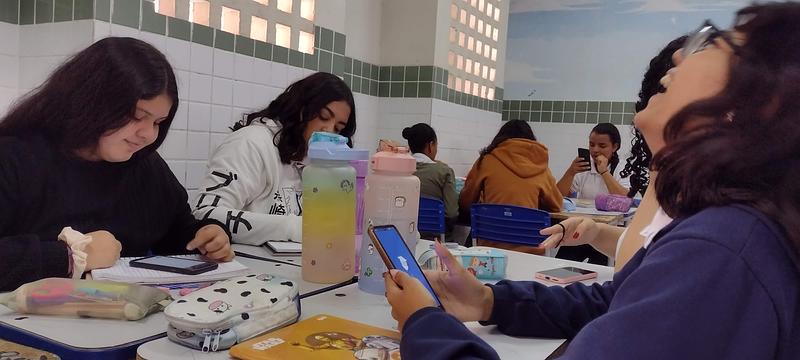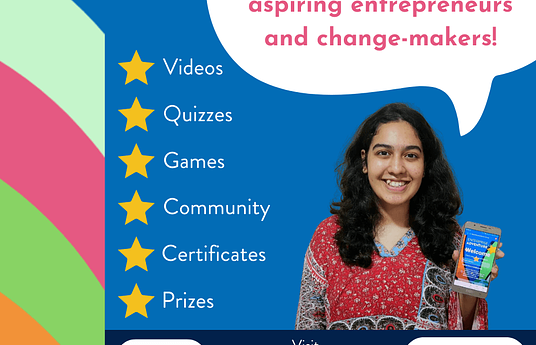“Kids today just don’t have the same focus!” That’s the constant refrain from teachers in today’s classroom. Over the past two decades, our attention span has evolved, prompting us to find new and stimulating ways to maintain engagement and interest. Our minds are adapting to navigating this new terrain of smartphone and constant connectivity, jumping from topic to topic as our attention demands it - a testament to our brains’ plasticity.
Within the educational realm, where traditional learning environments still prevail, there's a promising shift towards enhancing student experiences. Educators are exploring strategies that leverage students’ daily habits to bring learning to their home turf. Classrooms are evolving into hubs of self-motivated, interactive learning, catering to individual learning styles and pace. Educators, recognizing the importance of maintaining engagement, are fostering an atmosphere where students can concentrate and focus on the learning that matters most.
COVID-19 forced many educators and innovators to look for digital solutions to continue keeping students engaged in their learning. A direct result of this shift is, over the past couple of years, a growing trend of implementing gamification technology to improve learning outcomes, concentration, and engagement.
To learn more about the different ways gamification can be implemented in education we spoke to Jean Rafael Tomceac, Roberto Nascimento, and Ariel Roque from Sapieduca (Global Collection 2023) and Christophe Walder, Alison Rivett, and Elizabeth Medhurst from Enterprise Adventure. Both innovations have been shortlisted for the 2024 HundrED Global Collection.

In response to teachers struggling to maintain attention in the classroom and to provide more flexibility to the pre-existing rigid assessment standards, Brazil-based Sapieduca set about developing a solution. Intended to enhance formative assessments, Sapieduca works on a point and badge reward system to engage students in classroom studies.
The programme is designed to be versatile and give teachers more freedom and flexibility. “In Brazil our formative assessment system is very rigid and we wanted to create something that allowed teachers to grade and assess their students in many different ways,” explains Jean Rafael. Instead of students starting at zero and needing to work their way up, Sapieduca allots them 10 points which they then work to maintain. Roberto explains that “it is more motivating in the long term to work hard to keep a certain score than to get it and maintain it,” effectively leveraging loss-avoidance to enhance learning.
Sapieduca also allows for donating points between students which serves to move student focus away from individualistic badge collection and toward collaboration. Since Sapieduca is customisable to each educator's needs, one educator used this feature to hold an auction where students used the points they had gained to buy items created by fellow students in their art classes. This adaptive use fostered a tangible reward system that went beyond points and scoreboards, and transitioned the gamified element to the real world.
“The feature establishes and creates a new relationship with the student and the teacher, because they can negotiate points. We find new ways to evaluate and new ways to foster relationships with classes. We see improved communication and ways they can express themselves and their learning”- Jean Rafael Tomceac.
A similar method of utilising gamification to drive learning can be seen in Enterprise Adventure. Founded during COVID-19 in response to school closings and the continued need for in depth learning, Enterprise Adventure utilises game elements such as a combination of games, quizzes, assignments, real word tasks, and guest lectures to engage the learner in their program and motivate them to push their understanding. Through completing a group of 22 mini missions, students learn how to ideate, develop, and propose their own business ideas. Mini missions help make large, daunting tasks more manageable. Christophe Walder explains, “what we notice is while a big mission like 'go out and interview a local business owner' can be very daunting, if we break it down then learners feel more ready to tackle the mission. First they analyse a bad website our team created as a learning task and develop confidence, then they move on to visit a real business, walk inside a shop and report back. At that point, many have gained the skills and confidence to tackle that interview.”
A point of pride for Enterprise Adventure is that 55% of learners are girls, who also make up ⅔ of the winners of their hall of fame. When I asked how they managed to achieve such high numbers in a field traditionally male dominated, Christophe stated “While we don’t know for certain, we speculate that because our innovation is personalised and focused on the individual it provides a safe space for girls to experiment and share their ideas, unlike a traditional classroom where students are often competing to have their voices and ideas heard”.
This then begs the question: does online education help increase female education equality? As seen with Enterprise Adventure, an online and more intimate learning environment may in fact enable and empower girls to explore subjects that they otherwise may have avoided in school, drowned out in a classroom filled with boys. Gamification and online resources should not only be seen as a means to engage students, but as a tool to expand learning beyond the classroom.
If you are working on an education innovation, we want to hear about it! Submit your innovation to be considered for our next Global Collection.



